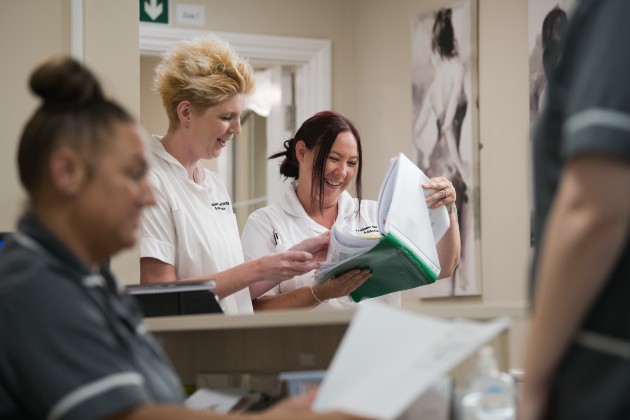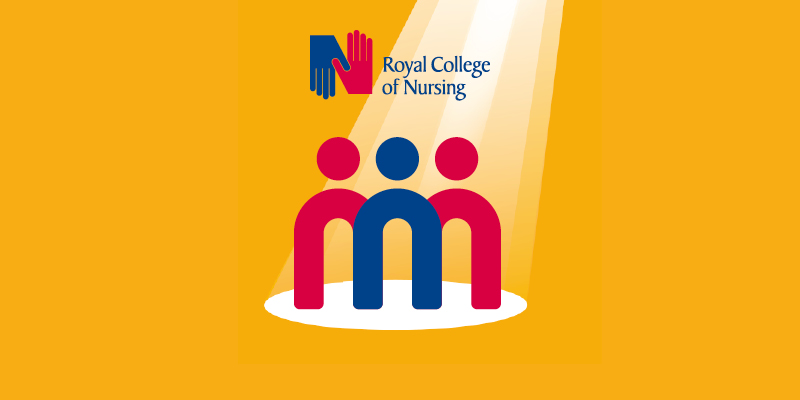Sarah Morgan loves to learn. It keeps her out of mischief, she says. But her latest quest for knowledge came about almost by accident: “I just kind of fell into it.”
With a history degree she’d never used, she joined St Martins Care, which provides residential and nursing care in homes across north-east England. Sarah was promised career progression – towards a senior carer role, she assumed. St Martins had other ideas.
Driven by Director of Care and Development, Hayley Robertshaw, plans were unfolding to recruit staff onto a nursing associate apprenticeship programme and Sarah was soon identified as an ideal candidate. “I was one of the first to be interviewed because I need things to keep me interested,” Sarah says. “I need to learn.”
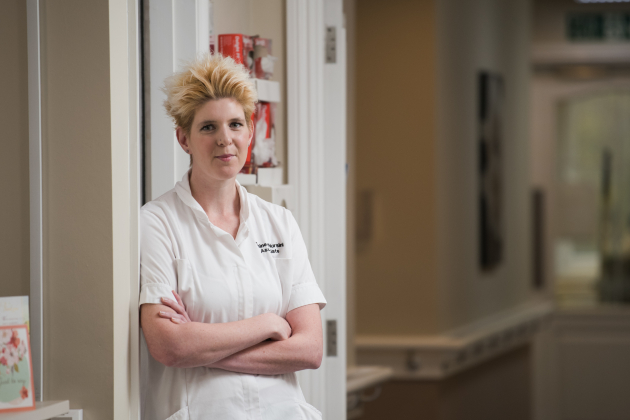
She began balancing her carer role with the academic demands of a nursing associate course at Teesside University, which she’s just completed. As someone who “fell into” the care profession, she is now on track to become a registered nurse.
The registered nursing associate role was developed to increase the capacity of the nursing workforce, in England specifically, with nursing associates delivering hands-on care within multidisciplinary teams. It also broadened access routes into health and care professions, and offered a new means of career progression.
Rare in social care
Increasingly common in the NHS, nursing associates remain comparatively rare in the independent care sector. But Hayley saw an opportunity. “We had some real challenges in nurse recruitment, as have most social care organisations,” she says. “There aren’t enough registered nurses for the NHS but it’s doubly hard in social care because nursing in social care isn’t really seen as a career choice.”
Heavy dependence on nursing agencies, with high associated costs and variation in the quality of care provided to residents, meant that exploring what nursing associates might offer by way of alternative was a “no-brainer”, Hayley argues.
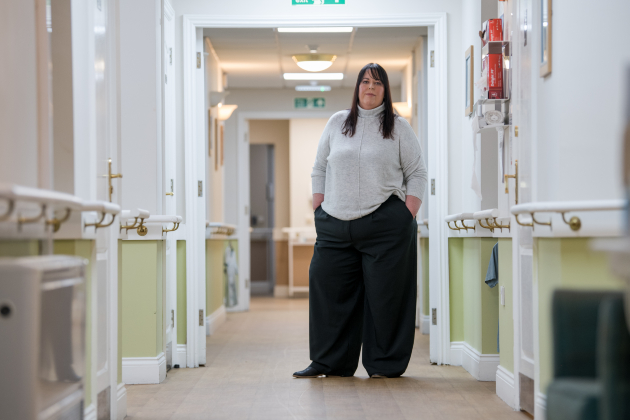
Her chief executive took little persuading that developing a nursing associate apprenticeship within the care group could help to address recruitment and retention issues. Holding on to staff members, many who were in post for less than a year before moving on, has been a particular problem for St Martins and other independent care groups. If one staff member leaves in a month, that’s manageable. “But sometimes there’s a month when seven people leave,” says Hayley.
Nursing associates
The nursing associate role is a level 5 apprenticeship and was designed to deliver hands-on, person-centred care as part of a multidisciplinary team, bridging the gap between health care support workers and registered nurses.
While following an academic programme, nursing associate apprentices are also required to learn on the job. Once qualified, they can register with the Nursing and Midwifery Council (NMC) and have the option to study a shortened nursing degree programme to become a registered nurse.
The RCN has always said there is place for alternative routes into the nursing profession if delivered appropriately and to a high standard. But a shortage of placements for all nursing students poses challenges and can place extra pressure on registered staff who must provide clinical care while also supervising and mentoring learners.
Three senior carers, Sarah included, were the first to be offered places on the programme but more have followed. “We phased them at different entry points so that we didn’t have them all out of the business on the same day,” Hayley says.
Two years on, external recruitment for apprentice nursing associates has begun, with the promise that when they qualify they will earn the same as they would in the NHS.
“I was really clear that we had to map our pay scales to match the NHS because I wasn’t going to train all these nursing associates just for them to then leave for the NHS,” Hayley explains.
While Sarah is at the end of her nursing associate training, Natalie Metcalfe is just beginning.
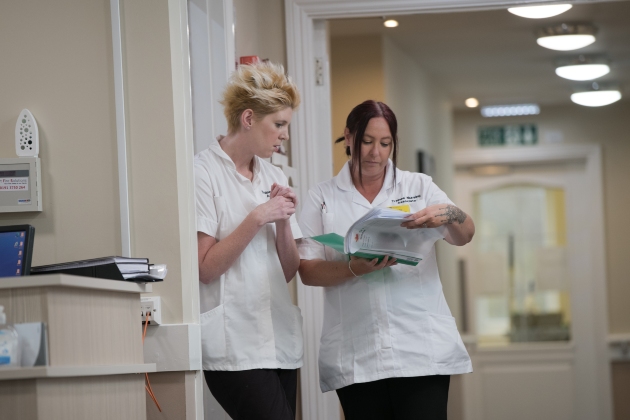
Before nursing associates existed, she had been a senior carer for eight years. “I wanted to progress but I didn’t want to go into management,” she says. At the time, she wasn’t keen on the idea of studying for a traditional nursing degree either. Her options seemed limited so she left the care sector and went into policing.
“Eventually I realised that although in the police you were helping people, it wasn’t what I wanted to do, so I came back into care,” Natalie says. “St Martins were looking for nursing associates, so I applied.”
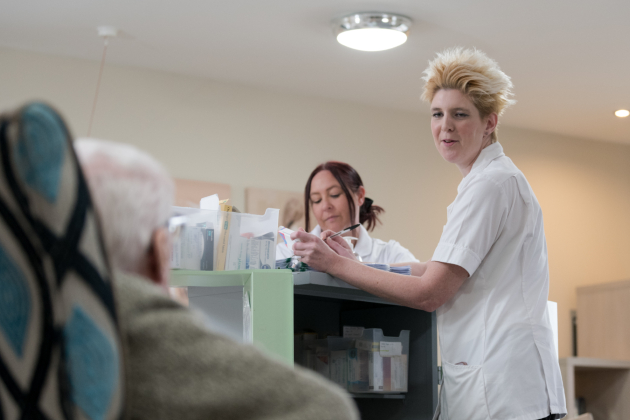
Like Sarah, Natalie hopes to become a registered nurse by applying for a top-up course that offers fast-track progression from nursing associate to registered nurse, typically in 18 months or two years.
She’s working on her daughter, too: “I’ve been encouraging her to start working here and hopefully she’s going to follow in my footsteps.”
Annabel Rhodes, a nurse and group clinical lead for St Martins Care, says Sarah and Natalie are blazing a trail that others within the care group are keen to follow. “It’s inspired other employees,” she says. “Seeing the progress Sarah has made and Natalie is starting to make has interested others.

“That’s good because people think working in care homes isn’t a good career choice. This is changing that mindset and showing that practice and development are changing and we have to keep up.”
Challenging stereotypes
For Sarah and Natalie, there’ve been challenges along the way. The academic work required for the course is demanding, says Natalie. “You have to keep on top of it because it is a lot, especially when you’re working as well.”
Sarah says there was a perception that those from the care sector were not as skilled or knowledgeable as nursing associate apprentices from the NHS. Finding placements within the NHS also posed problems: “It’s a real struggle if you’re an outsider and you need that ward-based experience.”
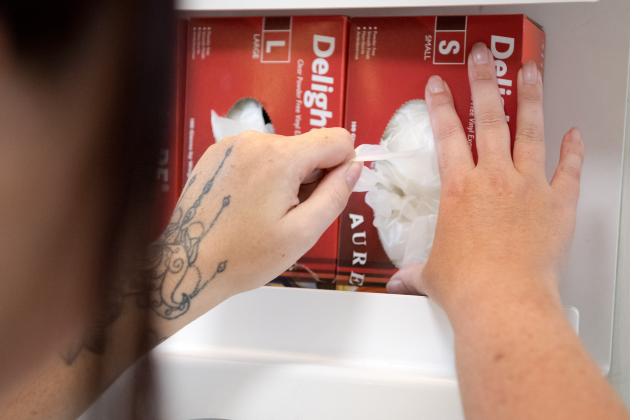
That said, she found placements in an NHS memory clinic, with Admiral nurses and in a private hospital, as well as within St Martins Care.
Hayley says that Teesside University responded positively to feedback that the course was too focused on ward-based learning. “They worked with us to adapt the curriculum to make sure the learning experience really reflects nursing across the whole system, not just NHS settings,” she says.
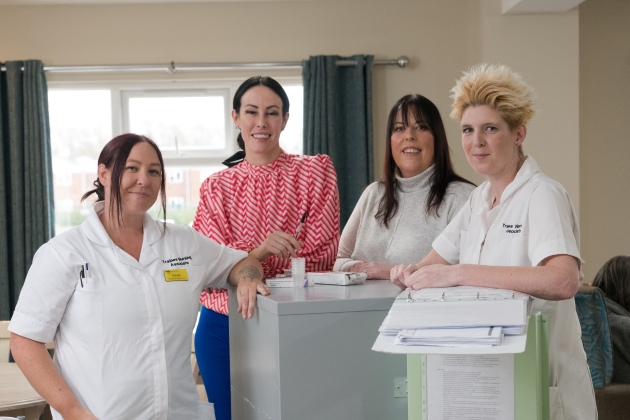
It’s too early to say whether the nursing associate apprenticeship programme will resolve recruitment and retention challenges at St Martins Care but the early signs are encouraging.
It’s been a big financial investment to backfill day-release placement time, Hayley says, and the RCN has warned that nursing associates are not a long-term fix for the ongoing nursing staffing crisis. But it’s offered a new way to join and progress in the nursing profession. Against the cost of high staff turnover, it’s beginning to look like a good investment.
Find out more
- Read our information about career paths for nursing support workers and find out more about how the NMC regulates nursing associates.
- The RCN also offers advice and support for all members working in the independent sector.
- The RCN celebrates nursing associates and other nursing support workers every year on Nursing Support Workers’ Day. Find out more here.


